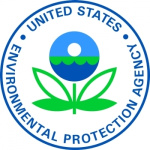- Industry: Government
- Number of terms: 11955
- Number of blossaries: 0
- Company Profile:
U.S. Environmental Protection Agency (EPA) is a federal agency responsible for the development and enforcement of regulations for human health and environment protection. The agency researches and sets standards for environmental programs and delegates. It was founded in 1970 following the proposal ...
Ozone, the triatomic form of oxygen (O3), is a gaseous atmospheric constituent. In the troposphere, it is created by photochemical reactions involving gases resulting both from natural sources and from human activities (photochemical smog). In high concentrations, tropospheric ozone can be harmful to a wide range of living organisms. Tropospheric ozone acts as a greenhouse gas. In the stratosphere, ozone is created by the interaction between solar ultraviolet radiation and molecular oxygen (O2). Stratospheric ozone plays a decisive role in the stratospheric radiative balance. Depletion of stratospheric ozone, due to chemical reactions that may be enhanced by climate change, results in an increased ground-level flux of ultraviolet (UV-) B radiation.
Industry:Natural environment
The submergence of land by water, particularly in a coastal setting.
Industry:Natural environment
Any natural unit or entity including living and non-living parts that interact to produce a stable system through cyclic exchange of materials.
Industry:Natural environment
A volcano in the Philippine Islands that erupted in 1991. The eruption of Mount Pinatubo ejected enough particulate and sulfate aerosol matter into the atmosphere to block some of the incoming solar radiation from reaching Earth's atmosphere. This effectively cooled the planet from 1992 to 1994, masking the warming that had been occurring for most of the 1980s and 1990s.
Industry:Natural environment
Energy derived from nontraditional sources (e.g., compressed natural gas, solar, hydroelectric, wind).
Industry:Natural environment
A period of rapid industrial growth with far-reaching social and economic consequences, beginning in England during the second half of the 18th century and spreading to Europe and later to other countries including the United States. The industrial revolution marks the beginning of a strong increase in combustion of fossil fuels and related emissions of carbon dioxide.
Industry:Natural environment
Indirect emissions from a building, home or business are those emissions of greenhouse gases that occur as a result of the generation of electricity used in that building. These emissions are called "indirect" because the actual emissions occur at the power plant which generates the electricity, not at the building using the electricity.
Industry:Natural environment
A process that acts to amplify or reduce direct warming or cooling effects.
Industry:Natural environment
The layer of ozone that begins approximately 15 km above Earth and thins to an almost negligible amount at about 50 km, shields the Earth from harmful ultraviolet radiation from the sun. The highest natural concentration of ozone (approximately 10 parts per million by volume) occurs in the stratosphere at approximately 25 km above Earth. The stratospheric ozone concentration changes throughout the year as stratospheric circulation changes with the seasons. Natural events such as volcanoes and solar flares can produce changes in ozone concentration, but man-made changes are of the greatest concern.
Industry:Natural environment
Livestock, especially cattle, produce methane as part of their digestion. This process is called enteric fermentation, and it represents one third of the emissions from the agriculture sector.
Industry:Natural environment
